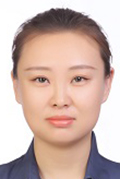“The junction of mountains and desert creates a unique landscape home to a unique culture”
Celebrating Earth Heritage
Hexigten UNESCO Global Geopark is located in China’s Inner Mongolia Autonomous Region at the junction of the Great Xing'an Mountains and Hunshandak Desert. Hexigten is at the junction of three important landforms, Daxing’anling Ranges, Yanshan Mountains and Otindag Sandy Land.
Hexigten UNESCO Global Geopark is characterized by its unique, beautiful, systematic and comprehensive geoheritage, which represents major geoheritage types in the central Inner Mongolia. Hexigten UNESCO Global Geopark lies at the collision of the North China Platform and Xingmeng Geosyncline at the site of convergence of three distinct vegetation types. The climate is a combination of the arid Mongolian climate to the north and the more humid climate to the south and east. This setting makes Hexigten unique and provides for the several distinct scenic areas such as: Arshihaty granite forest area, Qingshan granite mortar area, Dali Nur volcanic landform area, Huanggangliang Quaternary glacial vestige area, Reshuitang thermal spring area, Pingdingshan scenic Quaternary cirque group area, Xilamulun River valley area and Hunshandak sand land area.
Otingdag Sandy Land, located at the converging zone between agricultural area and pastoral area, is one of the most important landscapes in the UNESCO Global Geopark. The boundless grassland in Inner Mongolia is called the backyard garden of Beijing. The grassland vegetation biota in Hexigten UNESCO Global Geopark is at the convergence between the Northeast China biota and North China biota, with a very high biodiversity.
Sustaining local Communities
There are many cultural relics of Liao and Jin Dynasties in the UNESCO Global Geopark, and the local Mongolian minority has specific Mongolian culture and customs. The geology of Hexigten is actually complimented by the diverse ethnic cultures of North China and Mongolia. Four different culture systems arose from the Xilamulun River valley: the Various Red Mountain Culture; Grassland Bronze Culture; Ancient Qidan, Liao, Jin Culture; and the Mongolian Yuan Dynasty Culture. Further, portions of the Great Wall in ancient Jin State run across the vast grassland, winding its way to the mountains like a dragon. Together, geology and culture make a natural museum for exploring the uplift of Mongolian Plateau.
At present, the UNESCO Global Geopark has become a scientific research centre of many universities and academic institutions such as the “Research Centre for Quaternary Glaciers of China”, the “Research Centre for Granite Landform of China” and the “Teaching and Research Base of China University of Geosciences”.
Up to now, a total of 10 scientific monographs have been published, more than 18 scientific papers have been published on academic journals and 17 master and doctoral students have finished their dissertations in the UNESCO Global Geopark.
The tourist service and reception facilities are complete in the UNESCO Global Geopark, and the sign system is clear and sufficient. In some geo-regions, hiking plank paths are designed for visitors to enjoy sightseeing and to protect the environment. In order to promote scientific research in the UNESCO Global Geopark, a series of scientific research devices have been installed, including 5 meteorological observation devices and 3 samplers of air suspended particulate.


